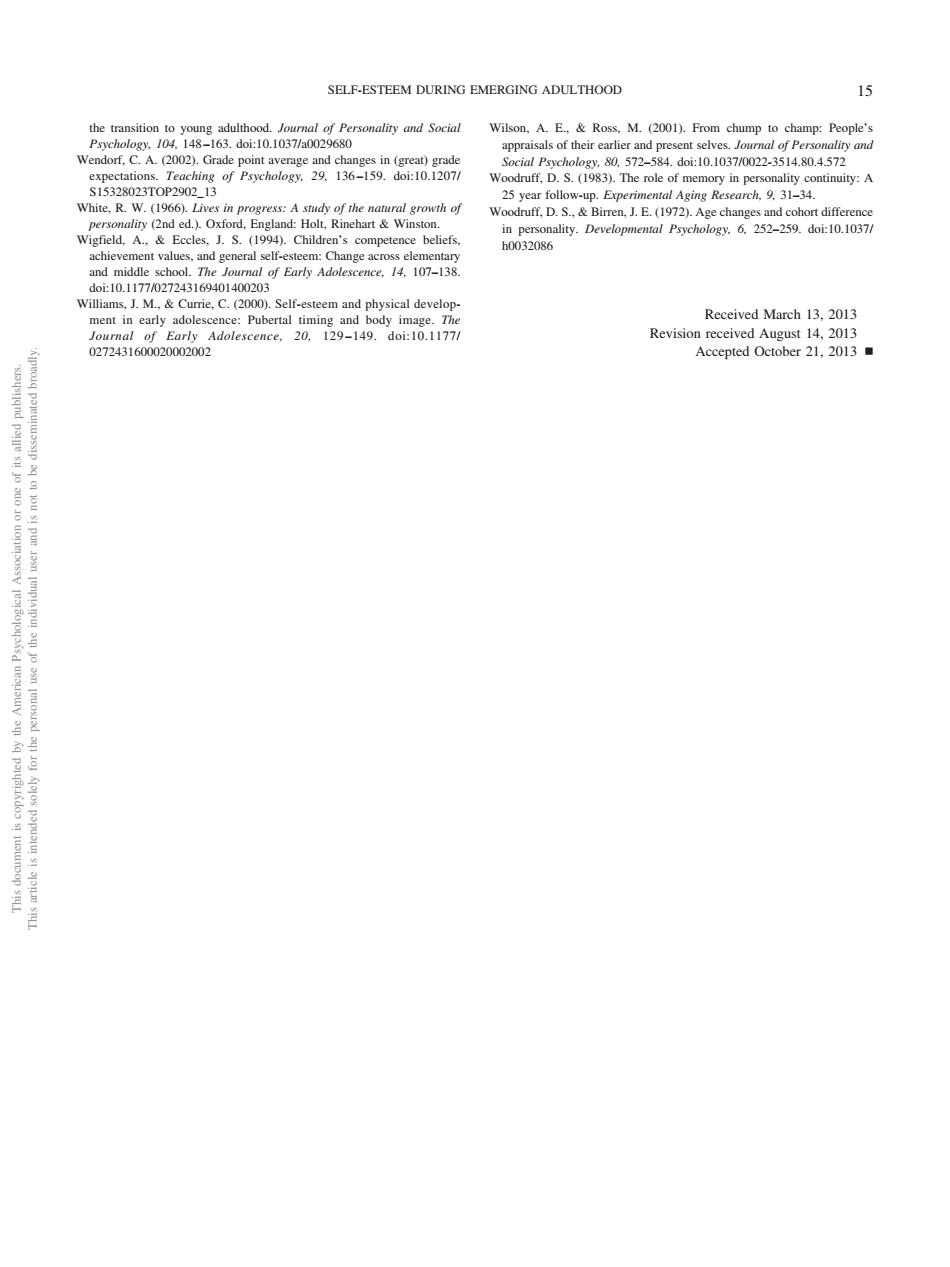正在加载图片...

SELF-ESTEEM DURING EMERGING ADULTHOOD 15 e h03206y. and middle The Jour Received March 13,2013 Revision received August 14,2013 027243160002002002 Accepted Octoher 21,2013the transition to young adulthood. Journal of Personality and Social Psychology, 104, 148 –163. doi:10.1037/a0029680 Wendorf, C. A. (2002). Grade point average and changes in (great) grade expectations. Teaching of Psychology, 29, 136 –159. doi:10.1207/ S15328023TOP2902_13 White, R. W. (1966). Lives in progress: A study of the natural growth of personality (2nd ed.). Oxford, England: Holt, Rinehart & Winston. Wigfield, A., & Eccles, J. S. (1994). Children’s competence beliefs, achievement values, and general self-esteem: Change across elementary and middle school. The Journal of Early Adolescence, 14, 107–138. doi:10.1177/027243169401400203 Williams, J. M., & Currie, C. (2000). Self-esteem and physical development in early adolescence: Pubertal timing and body image. The Journal of Early Adolescence, 20, 129 –149. doi:10.1177/ 0272431600020002002 Wilson, A. E., & Ross, M. (2001). From chump to champ: People’s appraisals of their earlier and present selves. Journal of Personality and Social Psychology, 80, 572–584. doi:10.1037/0022-3514.80.4.572 Woodruff, D. S. (1983). The role of memory in personality continuity: A 25 year follow-up. Experimental Aging Research, 9, 31–34. Woodruff, D. S., & Birren, J. E. (1972). Age changes and cohort difference in personality. Developmental Psychology, 6, 252–259. doi:10.1037/ h0032086 Received March 13, 2013 Revision received August 14, 2013 Accepted October 21, 2013 This document is copyrighted by the American Psychological Association or one of its allied publishers. This article is intended solely for the personal use of the individual user and is not to be disseminated broadly. SELF-ESTEEM DURING EMERGING ADULTHOOD 15